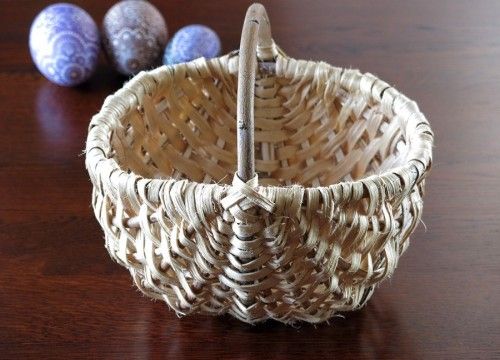
| You have no items in your shopping cart |
Transportation cost: Poland: 14 - 16 zł, Worldwide: from 22 zł

| You have no items in your shopping cart |
A large Easter basket was woven from pine root by a Kashubian handicraft master. It can also be used - it is also perfect for storing fruit and vegetables or small items. It will also be a great idea to organize family mushroom picking. The artist used the traditional Kashubian weave. Root plaiting is one of the disappearing disciplines of Polish handicrafts and is increasingly being replaced by wicker braid. The difficulty and time-consuming process of obtaining and processing the raw material as well as the complicated root weaving process mean that fewer and fewer people deal with this difficult craft. It's worth joining this type of braid to your collection before the art of making it disappears.
Weaving traditions in the Kashubian region date back to Middle Ages. Root weaving is exceptionally interesting form, characteristic of this region. Roots of pine, spruce and juniper are used in this type of weaving. Gathering and preparation of material is quite difficult. In root weaving it may take up even 75 percent of time devoted to work. You have to know how and where to find the right roots and recover them. Sometimes roots have up to several meters of length. It is important to use the obtained material quickly: when dried, roots are likely to break and may change colour. Root weaving is difficult, requires a lot of patience and imagination. According to sources, in the past the weaved objects were so tightly made that the method was used to produce water buckets. Originally, the weaved objects were used in everyday life, today they are real works of art that have not, however, lost their utilitarian values.
Gerard is a highly respected folk artist in the Kashubian region. He specializes in pine root weaving. He belongs to the Association of Folk Artists and is one of the few who can make his woven object so tight and dense that you can pour water in it. He himself says that "it is not work you can pay for..."
No customer reviews for the moment.













